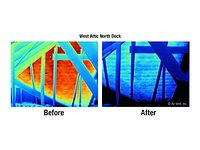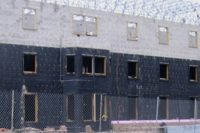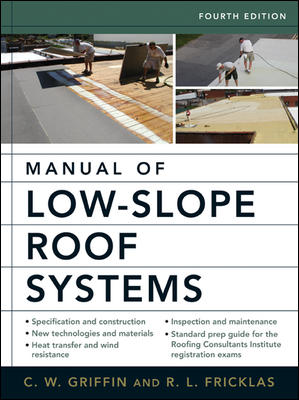Bob Kulp has seen the roof damage condensation can cause, and he is bringing his message to contractors at the IRE in a session titled, “A Systems Approach to Air Barriers/Vapor Retarders and Thermal Performance.”
Kulp, the founder of Kulp’s of Stratford in Stratford, Wis., has been in the roofing industry more than 26 years. He does both residential and commercial work, most of it in the form of retrofit projects. He wants contractors to understand the critical nature of having a building that is airtight — especially in northern climates. “We’ve seen some real devastation in the northern areas where the building and roof assembly were not airtight,” he said.
He’ll present actual case studies of buildings sustaining damage caused by the lack of an air barrier or vapor retarder: a layer of material used to protect the roof insulation and membranes from the damaging effects of internal humidity. “Simply put, an air barrier keeps the air inside the building from reaching the dewpoint on the outside of the building envelope.”
Recent harsh winters and mild winters bring up a key question, according to Kulp: “How do you make a building work in abnormal winters — whether much warmer or much colder than normal?”
Kulp points out that many contractors are working off of assumptions from the 1950s, when buildings were leaky but energy costs were minimal. Buildings need to breathe, but air movement must be controlled, stated Kulp, who likened airflow in a building to breathing. “Occupants in a building need to breathe, but the body is designed to breathe through the mouth and nose — not a hole under their armpit. It’s the same thing with a building. You have to control where the air is coming from in your building — and where it goes. You actually introduce 30 quarts of water through a three-quarter-inch hole into a building assembly over the course of one heating season.”
Leaky walls, windows, and recessed lighting can be obvious problem spots, as can any roof-wall junction. “In some cases there has been so much moisture that I’ve seen the glue disbonding from parapet walls at the junction point,” Kulp said.
Determining and controlling air leakage in roof assemblies is as important, if not more so, than adding additional R-value, stated Kulp. “R-value measures only one way heat transmits — conduction — and there are three. R-value measures conduction, but not convection or radiation.”
And unless you seal off all the air leaks, adding ventilation to roofing and attic assemblies as a knee-jerk reaction to problems might be detrimental to the building’s efficiency and durability, Kulp noted. He used a plumbing analogy to describe the situation: “If you had a leak in your basement plumbing, and none of the floor drains were close by, it’s like adding a new floor drain right below the leak and not fixing the leak. If you’re just adding ventilation to a leaky building, you’re not fixing the problem.”
In order to fix problems, they have to be properly diagnosed. The best way to diagnose problems is to depressurize the building in conjunction with an infrared camera. Depressurizing the building is accomplished through the use of a blower door, an airtight frame with a fan which is placed over an open door in the building. “An infrared camera can often find the problem by itself, but if you can depressurize the building and it begins to draw in outside air, the contrast is more obvious,” Kulp said. “The blower puts the building under negative pressure, and you can find points of infiltration with an infrared camera.”
When you find out where air is coming in, you know where air is going out. It’s the air going out that causes most of the problems in the north, and the air coming in that’s problematic in the south. Working in Wisconsin, Kulp’s more familiar with problems in cooler climates, but he’ll cover both types in his session at the IRE.
Kulp will examine commercial roofs and cathedral ceilings along with other case studies to demonstrate his points. “Some roofing contractors are building based on building science from 40 years ago,” said Kulp. “They’re on autopilot. The industry has really changed. It’s not enough to understand the roof. You have to understand the rest of the building.”








